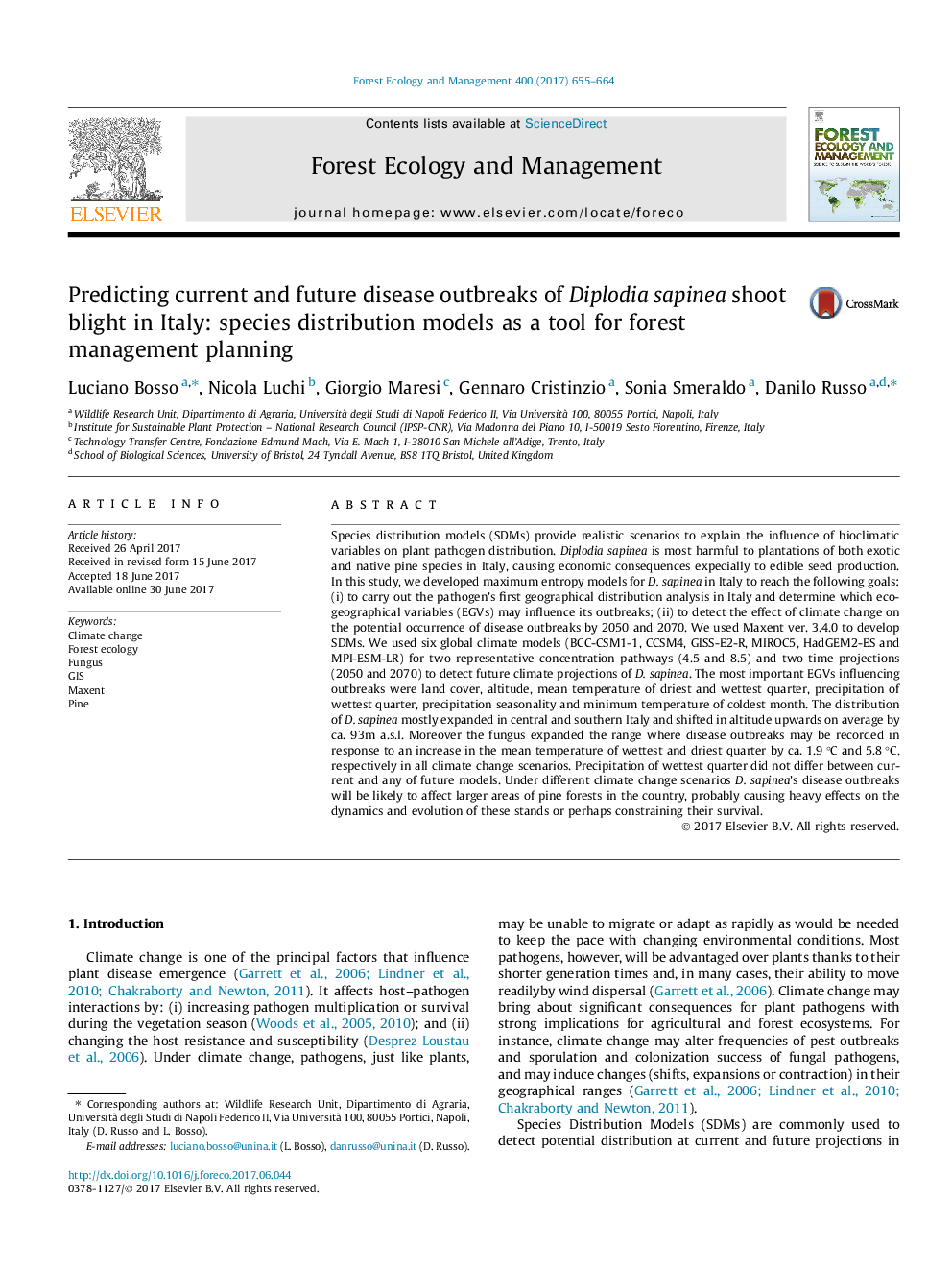| کد مقاله | کد نشریه | سال انتشار | مقاله انگلیسی | نسخه تمام متن |
|---|---|---|---|---|
| 6459316 | 1421358 | 2017 | 10 صفحه PDF | دانلود رایگان |
- Diplodia sapinea is most harmful to plantations of pine species in Italy.
- EGVs influencing D. sapinea's outbreaks were land cover, altitude and temperature.
- According to our analysis, distribution of D. sapinea will expand in central and southern Italy under climate change.
- D. sapinea range will shift in altitude upwards of ca. 93 m a.s.l. under climate change.
- D. sapinea will expand its range in response to an increase in temperature.
Species distribution models (SDMs) provide realistic scenarios to explain the influence of bioclimatic variables on plant pathogen distribution. Diplodia sapinea is most harmful to plantations of both exotic and native pine species in Italy, causing economic consequences expecially to edible seed production. In this study, we developed maximum entropy models for D. sapinea in Italy to reach the following goals: (i) to carry out the pathogen's first geographical distribution analysis in Italy and determine which eco-geographical variables (EGVs) may influence its outbreaks; (ii) to detect the effect of climate change on the potential occurrence of disease outbreaks by 2050 and 2070. We used Maxent ver. 3.4.0 to develop SDMs. We used six global climate models (BCC-CSM1-1, CCSM4, GISS-E2-R, MIROC5, HadGEM2-ES and MPI-ESM-LR) for two representative concentration pathways (4.5 and 8.5) and two time projections (2050 and 2070) to detect future climate projections of D. sapinea. The most important EGVs influencing outbreaks were land cover, altitude, mean temperature of driest and wettest quarter, precipitation of wettest quarter, precipitation seasonality and minimum temperature of coldest month. The distribution of D. sapinea mostly expanded in central and southern Italy and shifted in altitude upwards on average by ca. 93m a.s.l. Moreover the fungus expanded the range where disease outbreaks may be recorded in response to an increase in the mean temperature of wettest and driest quarter by ca. 1.9 °C and 5.8 °C, respectively in all climate change scenarios. Precipitation of wettest quarter did not differ between current and any of future models. Under different climate change scenarios D. sapinea's disease outbreaks will be likely to affect larger areas of pine forests in the country, probably causing heavy effects on the dynamics and evolution of these stands or perhaps constraining their survival.
Journal: Forest Ecology and Management - Volume 400, 15 September 2017, Pages 655-664
